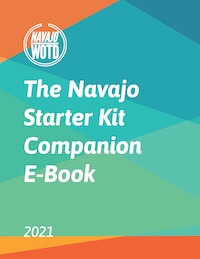adinídíín
light sunlight
ud din ni deen
This is the Navajo term for “sunlight” or, in a more general sense, simply “light.” Why does it sound a lot different from “lightning” (atsiniltł’ish)? That’s because the word for lightning references the accompanying sound of the flash of light. The more general word for light is used to refer to a more constant source of light.
However, the Navajo word for lighting is also the word for electricity, as you may remember. So using the previous word (of the day), you can say the following phrase to refer to electric light:
atsiniltł’ish bee adinídíín
